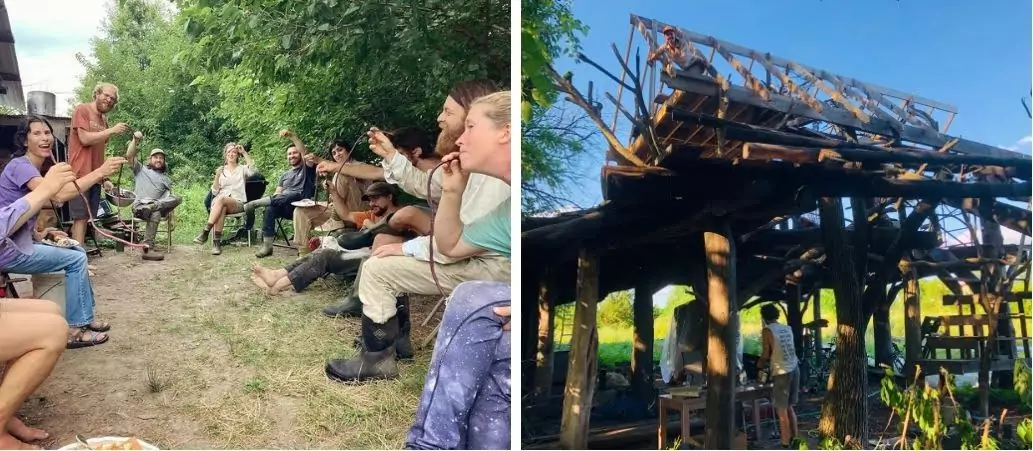Dear friends of Dancing Rabbit,
I was incredibly heartened to hear from many of you that last week’s email really struck a chord. It’s clear that something fundamental is out of alignment, and we are starting to see some very real consequences because of this. Dancing Rabbit has a unique role to play in how we adapt, resist, and construct viable alternatives to systems which are failing so many of us. Thanks to your encouragement, I feel motivated to delve deeper into these themes.
Towards this end, I want to tell you about DR projects we recently funded through our second annual Resilient Systems Grant. This grant is largely funded by the Mycelium Foundation and Ed Pultz, but also through many individual donations. Being able to offer this grant has contributed immeasurably to the sense of abundance and possibility at Dancing Rabbit.

First, a short reminder that Thursday, May 8, is Give STL, which is a day of raising money and awareness for regional nonprofits. Your donations directly support the types of projects I describe in this email, as well as our educational and outreach efforts. If you have the means, consider marking your calendar and bookmarking this giving link.
- Moonlodge renovation by the Queer Collective.
The Queer Collective will renovate Moonlodge (a two-story straw bale building) and transform it into a beautiful and functional living space. To do this, they will host up to eight work exchangers (wexers) at a time. The funding they have been awarded covers the basic costs of hosting the wexers, including food, community fees, and transportation costs. In addition to repairs and improvements to the building, they will create and manage a tool library out of the enclosed porch.

- Resilient pasture projects by the Dairy Co-op.

Installing a larger water tank. Fed by a solar-powered pump from our swimming pond, a larger water tank will allow us to store more water for livestock, and get us through longer cloudy periods.
- International residential code certification by Mae.
- Hoop house rehabilitation by Apple.

- In support of pollinators by Alline.
*https://moprairie.org/mission/outreach-and-education/what-is-prairie/
- Finishing Critter Kitchen by the Critter Collective.

That’s all for this week. Mark your calendars for May 8, and enjoy the springtime. 🌼
In community,
Eric
